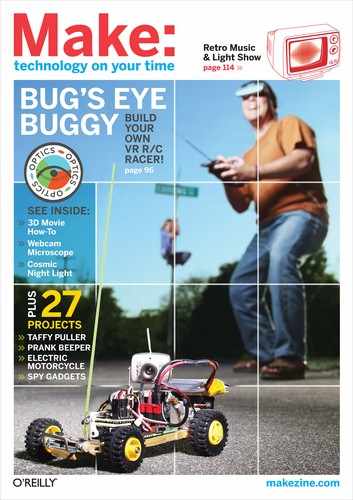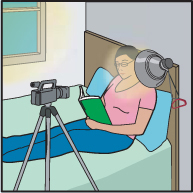Go cuckoo for coconuts, munch on the ultimate brain food, turn day into night, and build your own greenhouse.
TOOLBOX
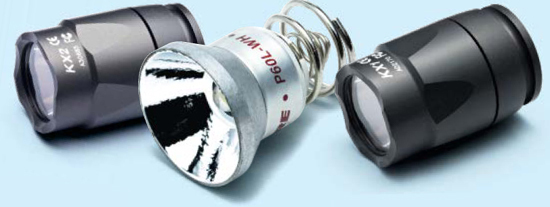
New LEDs Light the Way
LED Replacement Heads
$39–$66 surefire.com
Professionals — be they military, law enforcement, or fire/rescue — demand reliability and performance from their flashlights. Traditional high-performance torches used incandescent bulbs, and while never shying away from sheer lumen power, these bulbs were more than willing to consume lots of lithium batteries along the way.
Recognizing these facts, and also looking to expand their consumer base, SureFire recently unveiled a line of powerful LED replacement heads for their popular flashlights. The new P60L assembly and the KX1/KX2 replacement heads leverage Cree-based LED technology to provide maximum lumens with minimum power consumption.
The P60L reflector assembly converts any SureFire running a P60, P61, P90, or P91 incandescent lamp assembly into a longer-running (and higher-output in the case of the P60) LED flashlight. For a few seconds’ work, SureFire states that the P60L drop-in will provide a maximum of 80 lumens with a runtime of up to 12 hours.
SureFire’s KX1 conversion head replaces the entire incandescent head on their 1-cell E1E flashlight, and also replaces the older KL1 head found on earlier E1L models. Similarly, the KX2 head converts 2-cell E2E/E2D incandescents as well as older E2Ls.
With the introduction of these new assemblies, not only has SureFire brought the latest high-efficiency LED technologies to the masses, it also has introduced a practical, environmentally friendly lighting solution.
—Joseph Pasquini

Plug and Switch
$10 pluggrip.com
The PlugGrip tool is used to install and remove electrical outlets. I had never heard of it until it caught my eye as I was picking out wall outlets for our remodel. This tool was amazing! It must have taken half the time to replace our outlets, and the tool even let us know that we’d wired them correctly, as its lights lit up when we turned the power back on. I would recommend this tool to anyone looking to replace or install new outlets.
The SwitchGrip, made by the same company, is used to install and remove light switches. We were just as amazed with it. The built-in wire cutter and bender worked really well. When we were done, we turned the power on and the SwitchGrip beeped to let us know that the switch was working.
—April Zamora
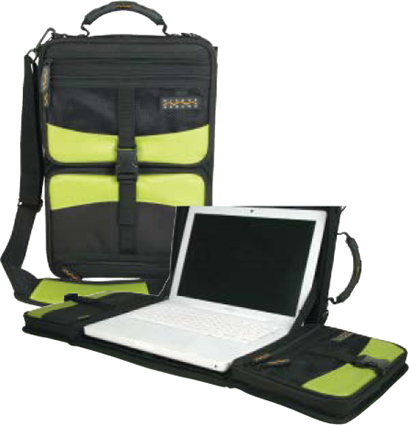
Laptrap
I’ve gone through over a dozen computer bags and had many favorites. But in recent years, I’ve stuck with the Laptrap. It’s the smallest possible bag that fits all my essentials: 15" MacBook Pro, spare battery, charger, cables, cellphone power supplies, CDs and DVDs, and all the miscellaneous crap I put in my carry-on. And as a confirmed backpack fan, the optional $10 backpack strap sealed the deal.
One of the Laptrap’s killer features is that the padded side pockets unsnap and fold open to turn it into an ad hoc lap desk. And I’ve come up with another way to use that feature: I can fit a change of clothes, folded flat, in the space beneath the side pockets.
—Brian Jepson
Lockdown
Keeping fasteners fastened isn’t always as easy as it seems, especially when it comes to vibration. Really cranking down on a nut or bolt won’t prevent a fastener from coming loose, and you could end up damaging parts. Enter the world of thread-locking compounds: adhesives specifically designed to hold tight.
I recommend Loctite 248, aka “Loctite blue.” Loctite has ingeniously utilized the glue stick as a vehicle for this thread-locker. Previously, Loctite was available only in liquid form, and while it worked well, its application was better suited to the bench than the field. The glue stick is great; it prevents waste and allows precise application of the material. Loctite 248 is a medium-strength thread-locker, meaning that you can undo what you’ve done without breaking your knuckles or resorting to a torch. I rarely fasten a nut or bolt without it.
—Alan Kalb
MAKE LOOKS AT KITS

RESOURCES:
Minty Amps: mintyamps.com/store
Grille Cloth: grillecloth.com
Cuckoo for Coconuts
Although coconut shells do have some well-established niche market uses, such as novelty bikini tops and small caged-pet shelters, lately I’ve been feeling that too many of them are going to waste. So, while recently trying to find an enclosure for the ukulele amplifier I was building, I naturally reached for a coconut. I don’t think I could have found a better case for my project.
In addition to the obvious thematic tie-in with the ukulele, the coconut shell has a number of other redeeming qualities. The shell is hard, durable, easily machined, and has a pleasing organic texture which can be left hairy, sanded smooth, or anything in between. The little brown dome of a coconut half-shell is cute as a bug, bringing a smile to all who see it. The parabolic shape is extremely stable and tip-resistant when used in the facedown position. Tip them up on edge and fashion a stand of some sort, and you’d have the basis for a really cool set of satellite speakers. I don’t even want to think about how great a pair of coconut shell headphones might be.
For my coconut amp prototype, I opted to start with a basic amplifier PCB and parts kit from Minty Amps. (Building circuits from scratch using the parts in your box can be rewarding, but for speed and convenience, nothing beats a kit.) The Minty Amp circuit, built around the LM386 amplifier IC and a handful of other components, has a tiny footprint. Tiny enough to let you house your new practice amp, complete with battery, speaker, switch, inputs, and outputs, inside that favorite little project box, the mint tin.
The Altoids tin does make a nice project case. It has a hinged lid, giving you easy access to your business, a great pocketable form factor, and of course it’s everywhere for free. The metal construction provides convenient RF shielding and a nice common electrical ground.
But despite these merits, I really had no choice but to opt for the coconut shell. I made a floor plate from ¼" plywood and secured it to the shell with 3 screws. The speaker grille is reproduction radio grille cloth stretched over a hoop made from a slice of PVC pipe. A classic-style knob for the power switch/volume control and a chrome input jack finish off the amp.
Now how are the Howells supposed to sleep with Gilligan making that confounded racket?!
—Steve Lodefink
COOL KITS FROM THE MAKER STORE
For these and more kits, visit store.makezine.com.
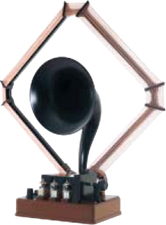
Vacuum Tube Radio Kit
$100 Product code: GKSSVTR
Put together a handsome vacuum tube radio from an easy-to-make kit. It includes a pin straightener for the vacuum tubes, a testing microphone so you can make sure everything is hooked up correctly to make sound, rubber feet on the fiberboard to minimize “howling,” a variable condenser to allow for finer tuning, and a powerful transformer for volume and sound quality.

Photograph by Midel Toriyama / Mike Richards
Peggy LED Boards
$80 Product code: MKEVLPEG
Another evil project from Evil Mad Scientist Laboratories, this light-emitting pegboard display (affectionately known as “Peggy”) provides a quick, easy, powerful, and efficient way to drive a lot of LEDs (up to 625) in a big matrix covering almost 1 square foot of area. You can make an LED sign for your window, a geeky valentine for your sweetie, one bad-ass birthday card, or freak the holy bejesus out of Boston. Your call. It’s a versatile, high-brightness display. How you configure it and what you do with it is up to you.
Mechamo Kits
$60–80 Product codes: GKMKC-P, -R and -IW
Make metal inch, scuttle, and undulate with these satisfying kits. The final robots are as sculptural as art, but even more fun in motion. One remote works for all three kits, so you can have robotic insect wars between the inch worm and centipede, and then watch the crab crush them both!
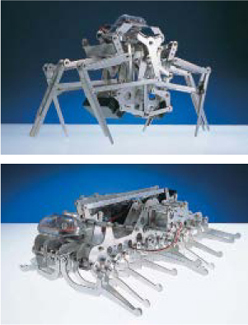
Telekinetic Pen Kit
$15 Product code: MKTELEPEN
From MAKE, Volume 13, comes this great DIY magic trick. Using a small battery, a magnetic reed switch, and a miniature pager motor, this device can be concealed inside a fine-point Sharpie pen. When the magnet is drawn near, the reed switch closes, making the Sharpie dance and vibrate as if by magic! Only you will know it’s really just sufficiently advanced technology.
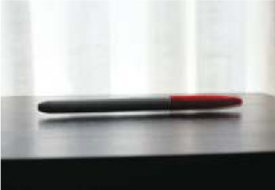
MAKE LOOKS AT BOOKS

Make Your Own Adventure
Trustee from the Toolroom by Nevil Shute
$16 House of Stratus
Sometimes good books of popular fiction just get lost. They’re not extinct, just ignored into obscurity. This may be what happened to this gem. Set in the late 1950s, it’s about an unassuming man who goes to extraordinary lengths to fulfill an obligation, taking him from a quiet suburb of London, to the South Pacific, to the Pacific Northwest, and back. Keith Stewart is a model maker who makes a modest income writing for Miniature Mechanic, a magazine “with a growing popularity amongst eccentric doctors, stockbrokers, and bank managers who just liked engineering but didn’t know much about it.” This simply written adventure is a terrific story where inventive model making stands Stewart in good stead on his odyssey.
—Kes Donahue

Wheel Life Lessons
The Chainbreaker Bike Book by Shelley Lynn Jackson and Ethan Clark
$12 Microcosm Publishing
The first half of this book is about bike maintenance: how to choose a frame, how to build a bike, and how to fix it when it’s broken. It overexplains some things, but it’s the perfect intro for someone who’s getting into bicycling and wants to learn more about their bike. (A lot of the women I know got into making stuff by building bikes, so consider this a gateway drug.) The back half of the book reprints four issues of Chainbreaker, a zine about bikes by Shelley Jackson. She started by publishing them out of her house in New Orleans, which was flooded after the levees broke. The originals were destroyed, but now you can see them in the book.
—Sam Murphy
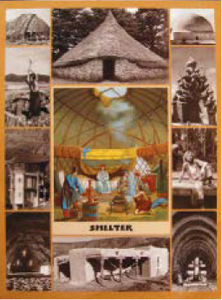
Gimme Shelter
Shelter by Lloyd Kahn
$25 Shelter Publications
This book is a structure addict’s dream. From page 1, it’s filled with stunning photographs, drawings, and charts from all over the world, showing how what we build to live in goes on to shape our lives. Shelter is an explosion of information: footnotes, articles, interviews, and other personal testimonies leak from the pages. How-tos are combined with even more outlandish but sustainable ideas from all over the world. Gypsy wagons, houseboats, tree dwellings, and location-specific habitations like the cliff debris villages of Timbuktu abound, on the scale from outsider culture to barn raisings to the building blocks of entire civilizations.
—Meara O’Reilly
FAVORITE THINGS
As chosen by David Grosof of OptiOpia
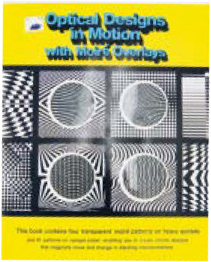
Optical Designs in Motion
with Moiré Overlays by Carol Belanger Grafton
There’s more to seeing than optics alone. This 1976 book of black-and-white optical art patterns comes with acetates that are also printed with op-art goodness. When the acetates are superimposed over the patterns and slowly slid, all kinds of interesting wavy-groovy moiré effects ensue, on page after page. Yet another reason recreational drugs are not necessary.

Edmund Optics Catalog edmundoptics.com
We grew up with Edmund Scientific toys and kits, so we have a warm spot in our hearts for Edmund Optics. The catalog has amazingly lush and colorful photography of even the dullest mechanical widget, and good tutorial descriptions and diagrams that show how to use, say, penta prisms to turn an image 90° without inverting or reverting it.
True Vision glassesformissions.org
Reading glasses for 70 cents? No electricity required to fabricate? I wouldn’t have believed it if I hadn’t seen the glasses made in South Africa. These evangelical Christian missionaries think good vision equals access to scripture, but the tools work for everybody: check out this site to learn how to turn wire on a simple jig to make frames that hold inexpensive plastic lenses. The site could use a video and a wiki, but the ingenuity shines through. Clearly.
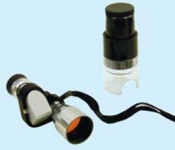
Surplus Shed Catalog surplusshed.com
We look here for lenses, filters, mirrors, adapters, kits, subsystems, and components for making projects and concocting toys. We like the low-priced military surplus and odd-lot high-quality components for stimulating new ideas, and the kits and gadgets to tear to pieces. Our favorite find so far is a little combo: when you screw a focusing loupe magnifier into a pocket 8×20 focusing monocular you get a powerful microscope!
Moong Dal sukhis.com
Our local farmer’s markets in the Bay Area sell the best crunchy-tasty snack ever: split, dehusked, and (I think) fried mung beans, called moong dal. At $5 a bag, it’s a highly addictive and very yellow treat that enables one to skip lunch while making and playing.
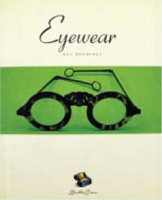
Eyewear: Gli Occhiali by Franca Acerenza
Whenever we get stuck, this book gets the creative juices flowing again. It surveys eyewear through the ages, with an amazing array of designs and exotic materials for monocles, pince-nez, sunglasses, and lorgnettes, from glasses for soldiers wearing gas masks to haute couture glasses for fancy folks. It’s inspiring to see how many ways the problem of hanging lenses in front of the eyes has been solved.
OptiOpia, Inc., is a for-profit social business devoted to making eyeglasses and eyecare more affordable and accessible to the half-billion to billion people who need glasses and don’t have them in developing countries. Check it out at optiopia.com.

Hoop Dreams
$39 hoopbenders.net
I’ve been a gardener for 26 years and never could afford a decent-sized greenhouse. When I first saw these benders on eBay, it seemed impossible that a tool priced so affordably could bend a steel hoop in 1 minute. Then I came across their website and bought one. The bottom line is that it really does the job and saves a lot of money. We bent the steel hoops for both our hoop greenhouses. This little tool will blow you away. I guess no one thought of a tool like this before because it’s just too simple, and I love, love, love simple.
—Sholady, TNT contributor
VoIP Magic
$39 magicjack.com
This PC device threatens to make expensive phone bills a thing of the past. I’m amazed at how well it works! It requires a broadband internet connection and can be used with any standard telephone — a real telephone number with area code is included. MagicJack is squaring off against the big boys in the VoIP market. Skype — probably the biggest competitor — also offers free calls, but only to other Skype users. The MagicJack’s superior voice quality and easy setup are hard to beat. Installation is a snap: just plug the tiny device into any available USB port, then plug your telephone into the device and that’s it! The computer (PC or Mac) automatically installs the software; no fussing with CDs or finicky drivers. When you lift the handset, you even hear a realistic dial tone. VoIP never sounded so good!
—Ken Delahoussaye
Alan Kalb is a patent attorney and the vice president and chief intellectual property counsel worldwide for Vonage.
April Zamora lives in Houston, Texas, where she works at a law firm.
Joseph Pasquini is an avid amateur radio operator and shortwave listener.
Ken Delahoussaye is a software consultant residing in Melbourne, Fla.
Kes Donahue is a rare books and special collections librarian at UCLA.
Meara O’Reilly is an intern for CRAFT magazine and a structure addict.
Steve Lodefink is a web designer and inveterate hobbyist in Seattle, Wash.
